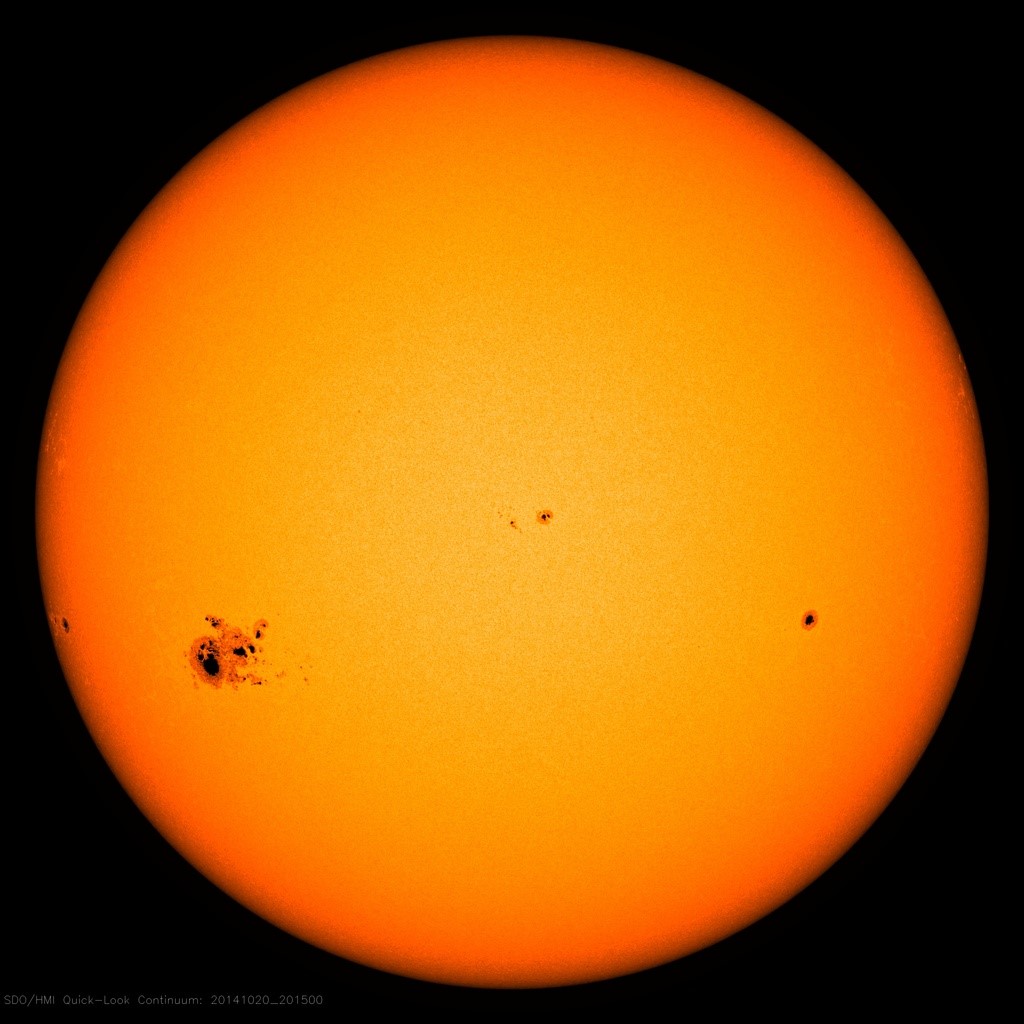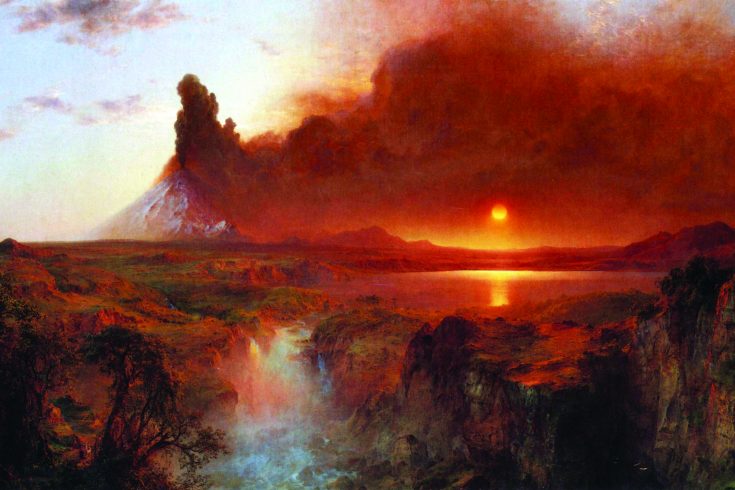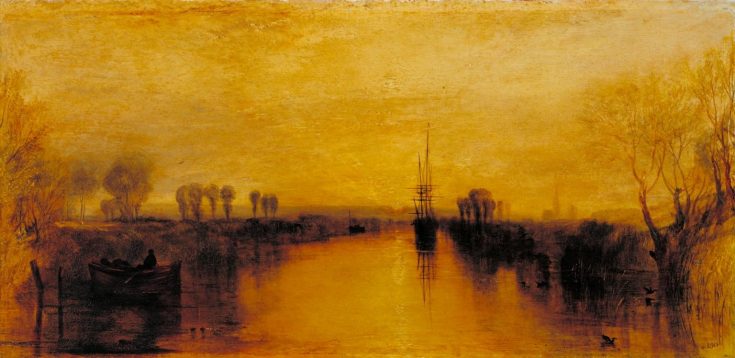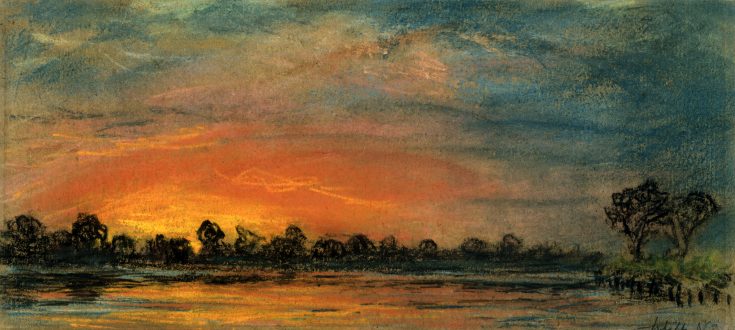Our Sun makes life on Earth possible. Beyond the reach of its warming rays the universe is vast, dark and freezing. Despite all humankind’s technological and scientific achievements, we could not survive without the Sun, and there is no better reminder of that fact than the extraordinary summer of 1816.
I had a dream, which was not all a dream.
The bright sun was extinguish’d, and the stars
Did wander darkling in the eternal space,
Rayless, and pathless, and the icy earth
Swung blind and blackening in the moonless air;
Morn came and went—and came, and brought no day,
And men forgot their passions in the dread
Of this their desolation
– Darkness, by Lord Byron

Byron was inspired to write this apocalyptic poem while staying by the banks of Lake Geneva in July 1816. That year, Europe and North America were in the grip of one of the coldest summers on record. A strange darkness covered the land, thunder rumbled in the mountains and torrential rain swelled the lake.
Forced to abandon their plans in the countryside, Byron and his guests – including Mary Shelley – retreated indoors at the Villa Diodati and amused themselves by writing ghost stories by candlelight. Mary Shelley was also inspired by these dramatic lightning storms, and it was in this atmosphere that she went on to pen Frankenstein.
In Darkness, Byron imagined the grim fate of humanity after the sudden death of the Sun, but this was more than just apocalyptic fantasy. The bad weather had devastated crops across Europe, leading to famines, typhus outbreaks and rioting. In North America, snow storms swept across New England in June, while woodland birds were driven into New York City, where they fell dead in the streets.
Meanwhile, a strange haze dimmed the Sun and monstrous sunspots spread across its surface like ‘black bile’. The spots were so large that they could even be seen without a telescope, just by looking through a piece of coloured glass. As people searched for an explanation for these frightening events, an astronomer in Bologna blamed the sunspots and said they signalled the imminent death of the Sun. According to his prediction, the Sun would go out on the 18th July 1816.

Rumours of this spread through Europe and England, stirring further hysteria among populations already pushed to their limits by famine, disease and civil strife.
While several newspapers attempted to calm public fears of the imminent end of the world, others explicitly described the connection between sunspots and weather patterns. An article in the Perth Courier stated:
It is in an undoubted fact that, during the whole season, the weather has been uniformly coldest, at least in this country, when the largest spots were turned towards the earth; and, indeed, if it be admitted that the Sun is the principal source of heat to the planets which revolve around him, that whatever affects the splendour of his atmosphere… must affect, in a corresponding degree, the temperature of these bodies.
The idea that sunspots could influence the climate had recently been advanced by the astronomer and discoverer of Uranus, William Herschel. In 1801, Herschel had presented a study to the Royal Society that compared grain prices from Adam Smith’s The Wealth of Nations to his own 40-year record of sunspot activity. He concluded that there was a probable link between the number of sunspots and the harvests. Though ridiculed by some of his peers, Herschel’s ideas remained popular for much of the 19th century and may have influenced the response to the events of 1816.
As doomsday approached, the panic reached fever-pitch with riots breaking out across Europe. In Austria, troops were drafted in to control anxious crowds, while newspapers speculated that the ‘prophecy’ of the death of the Sun had been spread to provoke revolution.
In France, the government was so concerned by the public mood that they produced pamphlets explaining that the sunspots were harmless. According to reports, one maidservant became so distressed at the prospect of the end of the world that she committed suicide.
In the end, the 18th July came and went, and the Sun continued to shine.
Nevertheless, the anxious mood persisted and the following months proved to be extremely challenging for the people of Europe and North America. The corn crop failed in the Eastern United States, driving subsistence farmers to seek better conditions further to the west. In Ireland, the famine triggered a typhus outbreak, which soon spread to the rest of the British Isles and killed over 65,000 people.
So, if the Sun wasn’t to blame for the terrible summer of 1816, what was?

It turns out the cold summer was actually the delayed result of the eruption of Mount Tambora in the Dutch East Indies. Between the 5th and 12th April 1815, the most powerful volcanic eruption in recorded history shattered the island of Sumbawa. As Tambora erupted, rock, ash and dust were blasted into the atmosphere, raining death and destruction across hundreds of miles. Of the 12,000 inhabitants of the island, a mere 26 survived.
Over the following year, the dust and volcanic gas spread across the globe, dimming the Sun and causing temperatures to drop in some regions by several degrees. An aerosol of volcanic particles produced strange yellow hazes and lurid sunsets.

Some think these lighting conditions are reflected in the paintings of William Turner, particularly Chichester Canal (though they could also be the result of the eye-damage that Turner suffered from staring directly at the Sun; a practice thought to help relax the eyes).
This remarkable episode highlights just how dependent we are on the Sun. Tambora’s eruption led to a relatively tiny reduction in the amount of sunlight reaching the Earth’s surface, and yet the impact in Europe and North America was dramatic. Byron’s poetry may paint a fantastical picture but in 1816 the prospect of a world without the Sun seemed terrifyingly real.

Learn more about humanity’s relationship with our nearest star in this blog series, based on our recent exhibition The Sun: Living With Our Star.